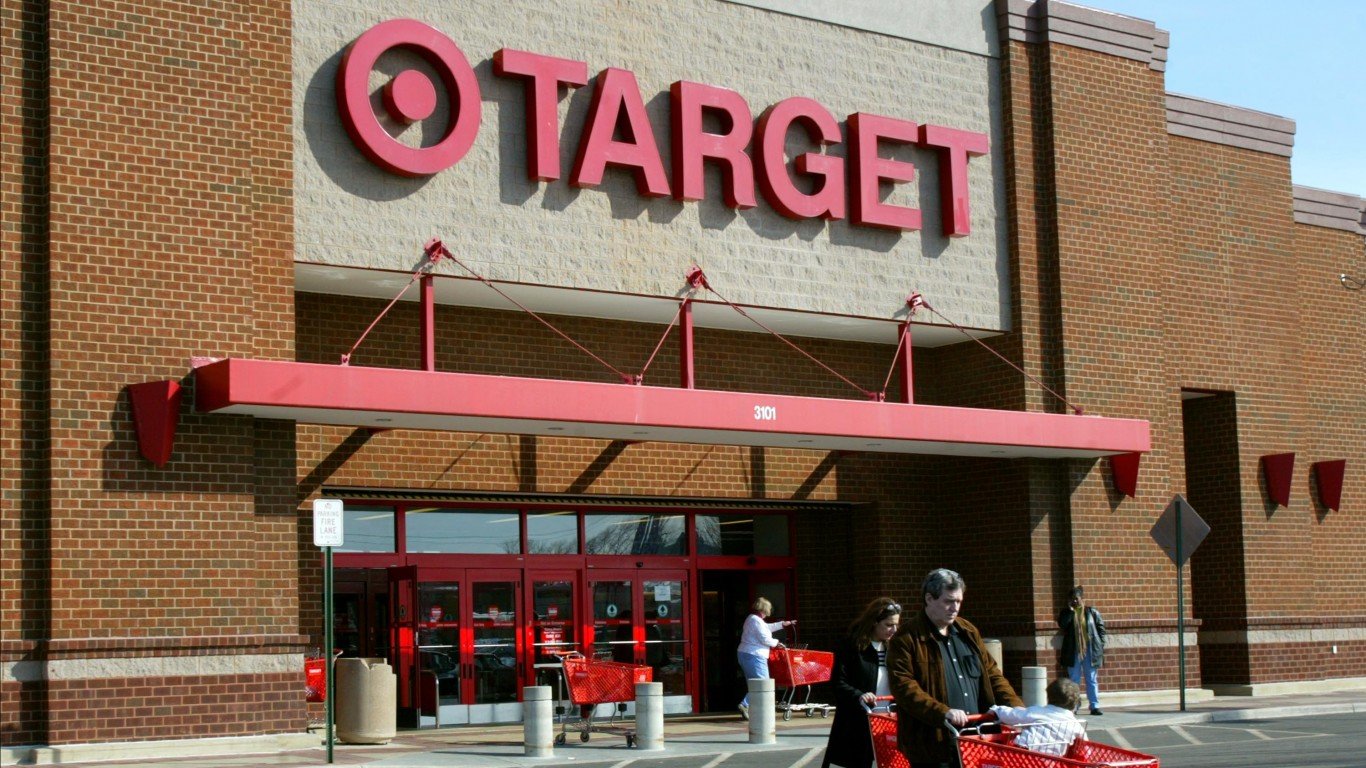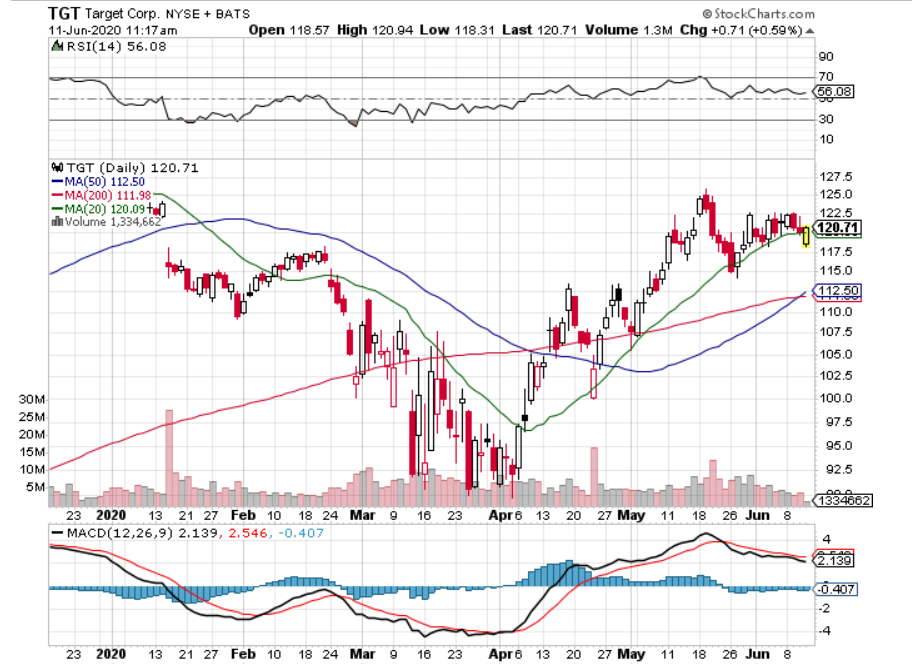

It is no secret that investors love their dividends. The general rule of thumb is that, over time, up to 50% of total returns can be attributed to dividends. What investors really love is when companies raise their dividends year after year. Target Corp. (NYSE: TGT) announced on Thursday that the retail giant was raising its quarterly dividend to $0.68 per common share.
This move represents a 3% increase from the $0.66 quarterly payout that investors had been receiving over the past year, but there are some other key takeaways that investors need to consider here for the long haul.
Target is not just a story about the dividend. This company has proven that it can overcome challenges, it has been deemed to be an “essential business” in a pandemic and the company is expected to keep growing while not having ridiculous valuations, considering the current carnage in this recession.
Some investors may not pay much attention to a 3% dividend payout, but Target is not just a Dividend Aristocrat. Target’s announcement marked the 49th consecutive year it has boosted its dividend. And on that note, the current recession has been less than pleasant for the economy, even if Target has proven itself to be one of the long-term survivors for the public.
Investors have stuck with Target throughout the recession. The stock peaked at close to $125 in January, and its dividend-adjusted low closing price was $90.56 on March 25, 2020. The reality is that Target’s stock price never should have been pushed down there, considering that the company has managed to prove itself as an essential business during the COVID-19 panic.
The big question for long-term investors is whether Target will get back to the $130 peak that was seen last December. The retailer’s new $2.72 annualized per share payout generates a 2.25% dividend yield. That is higher than the much larger rival Walmart Inc.’s (NYSE: WMT) 1.8% dividend yield, and it blows away the 0.7% yield on the 10-year Treasury note and the 1.45% on the 30-year Treasury long bond.
Analysts have not been making major changes on Target’s price targets, but the Refinitiv consensus analyst target price of $129.59 is not all that aggressive, considering its stance as an essential business and that it peaked at $130 a share at the end of 2019. BofA Securities also recently outlined how Target’s stock price might rise to $150 in the year ahead.
The earnings picture for 2020 is expected to be challenging. The $6.39 in earnings per share in 2019 is expected to be $5.00 per share in 2020 but to rise up to $6.80 per share in 2021. Revenues are expected to be up 6% to $82.8 billion in 2020 and to grow by only about 2% to $84.3 billion in 2021. The reality is that Target’s expenses have been rising as it faced the same challenges as other major retailers during the pandemic: higher labor costs, issues with supplies and transportation, international trade issues and so on.
When Target reported earnings on May 20, the stock sold off despite it beating expectations on profits, sales and same-store sales. What should have really stood out as a success in Target’s report was that its comparable digital sales accelerated every month in the quarter, to 282% in April from just 33% in February, and that the Target stores fulfilled almost 80% of all first-quarter digital sales. Target also signaled that it saw a healthy gain in market share across all five of the retailer’s core merchandise categories.
Target also is among the companies that have continued to return capital to its shareholders throughout this recession. The company did announce a temporary suspension of stock buybacks to preserve liquidity and to keep its credit ratings strong. Target spent $332 million on its dividend payments in the first quarter, and it repurchased $609 million worth of common shares to retire 5.7 million shares, with an average purchase price of $107.58 — and its stock price is currently up more than 10% on just that batch of purchases.
Target’s chart (see below, courtesy of StockCharts.com) also shows mixed signals. The stock recently dipped under its 20-day moving average, but the 50-day and 200-day moving averages are handily lower, and there was a positive crossover seen in recent days.
As far as valuations are concerned, investors are writing off 2020 as a one-time blow in most retail companies. In an effort to blend 2019 earnings and 2021 earnings, a $6.60 per share would be used. With a $120 share price, that would represent roughly 18 times normalized earnings. Target remains an essential business that investors are likely to reward long after the COVID-19 pandemic passes.
While Target faces cost pressure on the operating expenses (wage) side, Target has managed to avoid the mall-based model, and that has allowed the retail giant to thrive as its own destination. It offers a different experience than Walmart or Costco. It has reasonable valuations and a reasonable payout against its earnings power. Even if some investors want to wait for a pullback or more market pressure, there is a lot more than just the dividend story to keep long-term investors interested here.

Take This Retirement Quiz To Get Matched With A Financial Advisor (Sponsored)
Take the quiz below to get matched with a financial advisor today.
Each advisor has been vetted by SmartAsset and is held to a fiduciary standard to act in your best interests.
Here’s how it works:
1. Answer SmartAsset advisor match quiz
2. Review your pre-screened matches at your leisure. Check out the
advisors’ profiles.
3. Speak with advisors at no cost to you. Have an introductory call on the phone or introduction in person and choose whom to work with in the future
Take the retirement quiz right here.
Thank you for reading! Have some feedback for us?
Contact the 24/7 Wall St. editorial team.



